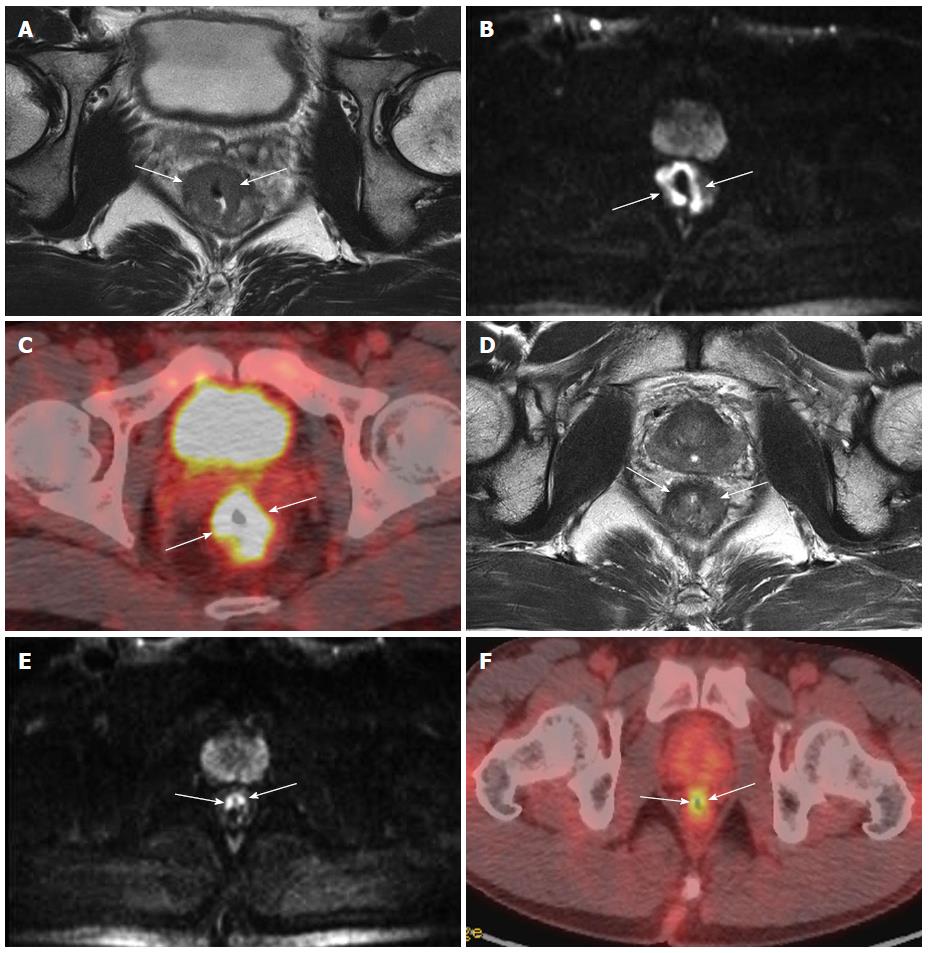Copyright
©2014 Baishideng Publishing Group Co.
World J Gastroenterol. Apr 21, 2014; 20(15): 4244-4255
Published online Apr 21, 2014. doi: 10.3748/wjg.v20.i15.4244
Published online Apr 21, 2014. doi: 10.3748/wjg.v20.i15.4244
Figure 5 Combination of high-resolution magnetic resonance imaging with diffusion-weighted imaging and positron emission tomography/computed tomography for assessing tumor response after neoadjuvant chemoradiotherapy.
A-C: T2-weighted magnetic resonance image (MRI) (A), diffusion-weighted imaging (DWI) (B), and positron emission tomography (PET)/computed tomography (CT) (C) obtained before chemoradiotherapy (CRT) shows a T3 tumor (arrows) with the restricted diffusion and intense hyper-metabolism; D-F: After CRT, T2-weighted MRI (D) shows a marked decrease in the tumor size. DWI (E) shows the focal diffusion restriction confined to the rectal wall, corresponding to histological proven T2 lesion. PET/CT (F) also demonstrates the good tumor response to CRT.
- Citation: Heo SH, Kim JW, Shin SS, Jeong YY, Kang HK. Multimodal imaging evaluation in staging of rectal cancer. World J Gastroenterol 2014; 20(15): 4244-4255
- URL: https://www.wjgnet.com/1007-9327/full/v20/i15/4244.htm
- DOI: https://dx.doi.org/10.3748/wjg.v20.i15.4244









